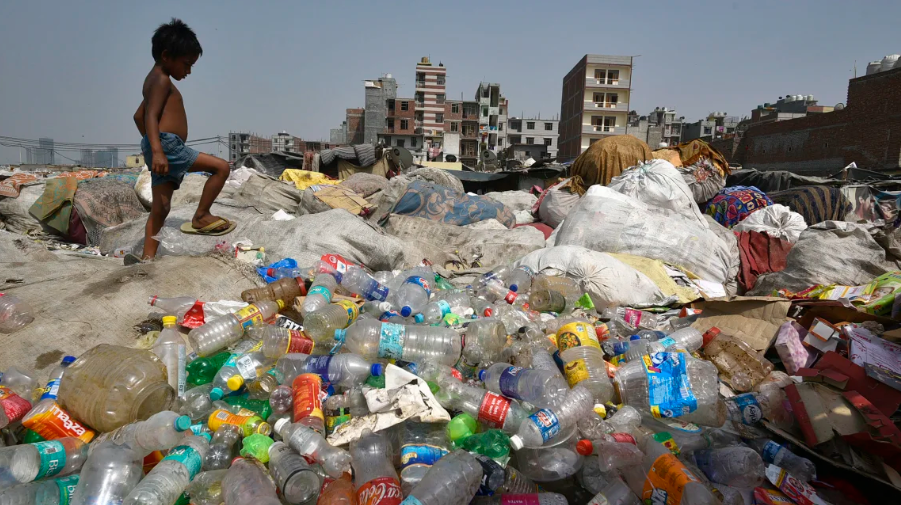On Delhi’s mounting waste crisis (GS Paper 3, Environment)

Context
- The Supreme Court’s recent criticism of solid waste management (SWM) in New Delhi highlights a critical issue.
The status of Delhi’s SWM system
- According to the 2011 Census, New Delhi’s population was about 1.7 crore, which in 2024 is expected to be around 2.32 crore.
- Considering an average per capita generation of about 0.6 kg/day per person, the city generates approximately 13,000 tonnes per day (TPD) of waste.
- About 90% of the waste generated in the city is collected by the three municipal corporations: the Municipal Corporation of Delhi (MCD), Delhi Cantonment Board, and the New Delhi Municipal Corporation.
- Generally, about 50-55% of the waste generated in Indian cities is biodegradable wet waste; 35% is non-biodegradable wet waste; and 10% is an inert component.
The processing capacity of SWM in Delhi
- New Delhi has waste-processing facilities at Okhla, Bhalswa, Narela, Bawana, Tehkhand, SMA Industrial Area, Nilothi, and Ghazipur.
- However, the MCD is disposing of unprocessed waste of 3,800 TPD in the three designated landfills: Gazipur, Bhalswa, and Okhla.
- These landfills, consisting of unprocessed wet and dry waste, generate methane gases, leachates, and cause landfill fires, adversely affecting the surrounding environment.
- The MCD initiated biomining to reduce the amount of waste in 2019, but the COVID-19 pandemic halted these efforts. Initially planned to be completed by 2024, this task will take another two to three years.
The Challenges
- One major issue is the lack of waste segregation at source. Many households and commercial establishments don’t do this. As a result, unprocessed mixed waste enters landfills.
- Additionally, waste processing plants need large land parcels, of about 30-40 acres each, which is a challenge in Delhi. This challenge in turn leads to a significant portion of waste being left untreated.
- Public awareness of proper waste management practices is also lacking, contributing to littering and improper disposal habits, which divert the MCD’s attention towards clearing open points rather than processing wet waste.
- Lack of regular waste collection services in certain areas also add to the buildup of waste as well as littering, while illegal dumping in open areas and water bodies increases the pressure on the municipal body, warranting more resources for clean-up.
- Finally, a lack of coordination among various stakeholders — including multiple municipal corporations — results in inefficient waste management, further complicating the MCD’s efforts to address the city’s waste management issues.
Need of efforts
- As the national capital, Delhi needs to scale up its processing capacity to manage daily waste.
- With this in mind, the MCD should design a waste-management plan to cater to about three crore people while the total design capacity of the city’s waste processing facility should be 18,000 TPD.
- Biodegradable wet waste should be composted or used to generate biogas. The design capacity of the wet-waste-processing system should be set at 9,000 tonnes.
- As for the non-biodegradable dry waste: about 2% will be recyclable, and this can be sent to recycling facilities. The remaining 33% won’t yet be recyclable.
- The non-recyclable dry waste fraction is called refuse-derived fuel (RDF) and consists of plastics, paper, and textile waste. This material has good calorific value and can be used to generate power in waste-to-energy projects.
Way forward
- Given the challenges with identifying large land parcels, Delhi will need to partner with its neighbouring States to set up a few of these composting plants.
- Delhi’s SWM system should integrate decentralised options for both wet and dry waste, backed by large processing facilities to ensure all the waste generated is scientifically processed.
- The city must also ensure existing processing facilities operate at full capacity, while new facilities are built to ensure no waste goes untreated.
- Finally, urban local bodies should also learn from best practices from other cities in India and abroad on efficient SWM processing.


